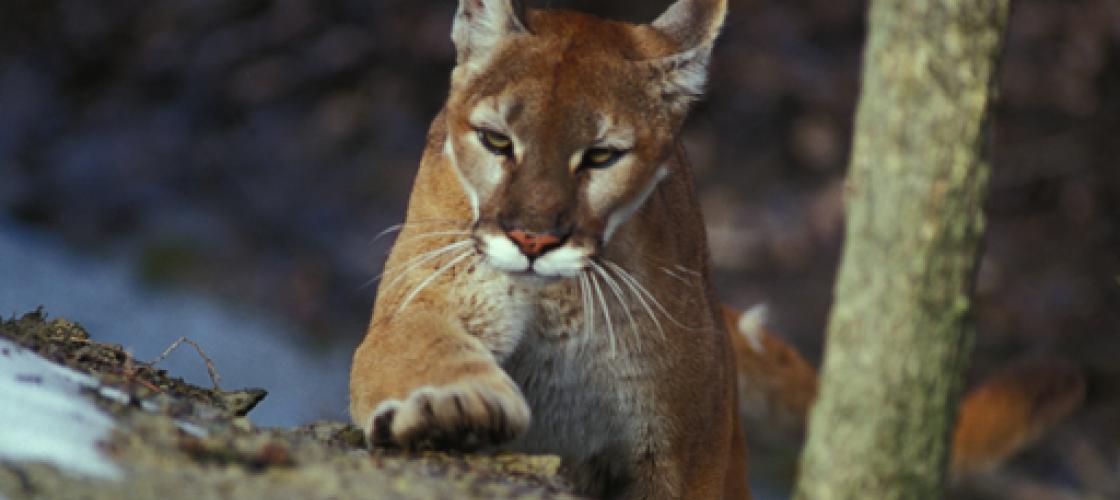
Expert trackers look for the following to identify mountain lion tracks:
- Three lobes at the bottom of the pad. Dogs and coyotes have one indent at the bottom of their pads.
- Teardrop-shaped toes. Dogs’ and bobcats’ toes are shaped like an oval.
- Between 3- and 3.5-inch-wide tracks. Bobcat tracks will be much smaller—less than 2 inches wide—which is smaller than the print of a 6-month-old mountain lion kitten.
- No claw marks are usually visible, except in extremely rare occasions when mountain lions use them for extra traction or to build up speed. Claw marks are usually visible in dog and coyote tracks. Dogs leave a blunt, flat claw mark. When present, a mountain lion's claw marks are slender and sharp.
Title
Mountain lions
They generally kill their prey quickly and efficiently. They creep close, then rush quickly to hit the animal and bite it either in the back of the neck to sever the spinal column, the throat to crush the trachea, or the skull to puncture the brain. They do not have long endurance, and do not make long chases.
Mountain lions use their claws primarily as hooks to hold onto their prey until they can administer a lethal bite. They seldom leave deep slashes.
After the prey is dead, they generally drag the carcass to dense cover to feed. They often open the abdominal cavity, roll out the stomach and intestines and begin feeding on the other soft internal organs. On other occasions they begin to feed at the shoulders and ribs.
After they’ve eaten their fill, mountain lions generally cover the remainder of the carcass with grass, leaves, dirt and other debris. They return to the kill for subsequent feedings as long as it lasts, or until they make another kill.
Title
Bobcats
Since Missouri has an increasing bobcat population—and because bobcats employ many of the same techniques to kill and eat their prey—distinguishing the two often depends on finding and measuring tracks and/or punctures made by their canines. A mountain lion’s canines are 2 to 2.5 inches apart; dogs are less than 2 inches; coyotes are 1.5 inches; and bobcats are about 1 inch apart.
Title
Dogs
Dogs frequently attack and kill wildlife and livestock. They usually chase their prey and attack wherever they can get a hold on the animal, most often the hindquarters, tails, ears and nose. Bite marks from dogs raking down the shoulders, sides and flanks of livestock are often mistaken for "claw marks." Their attacks usually lead to indiscriminate mutilation and they feed very little on their prey. Dogs generally do not kill the prey quickly or efficiently, but pursue and bite it repeatedly, causing other injuries from collisions with gates, fences and other objects.
Mountain lions make little noise in the woods. When they do, they often sound like a person whistling or a bird chirping. When they growl, they sound like an overgrown house cat. Kittens have a raspy, loud purr. Many people hear shrieks in the night and think they are made by mountain lions, but almost always these blood-curdling screams are made by other animals. Listen to the audio file on this page to hear various mountain lion sounds compared to those of several other animals you may hear at night.






















